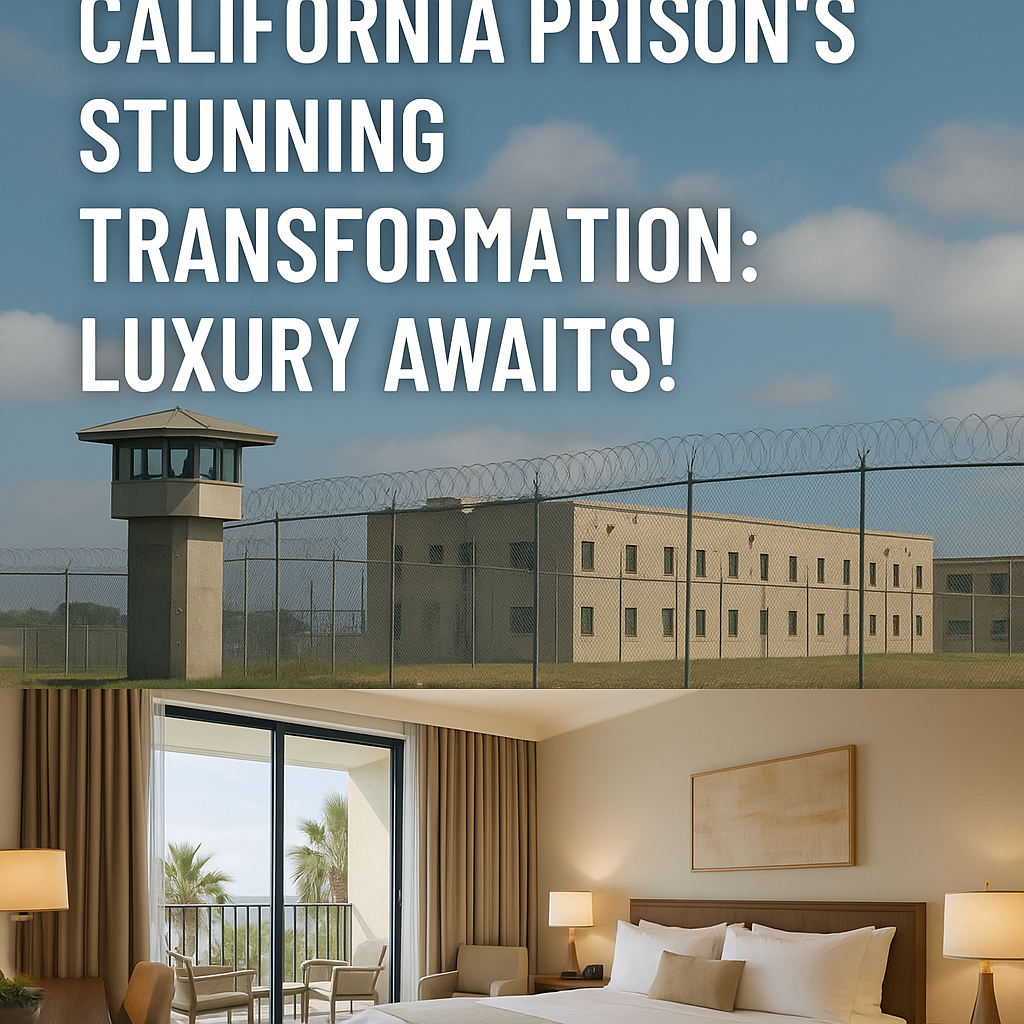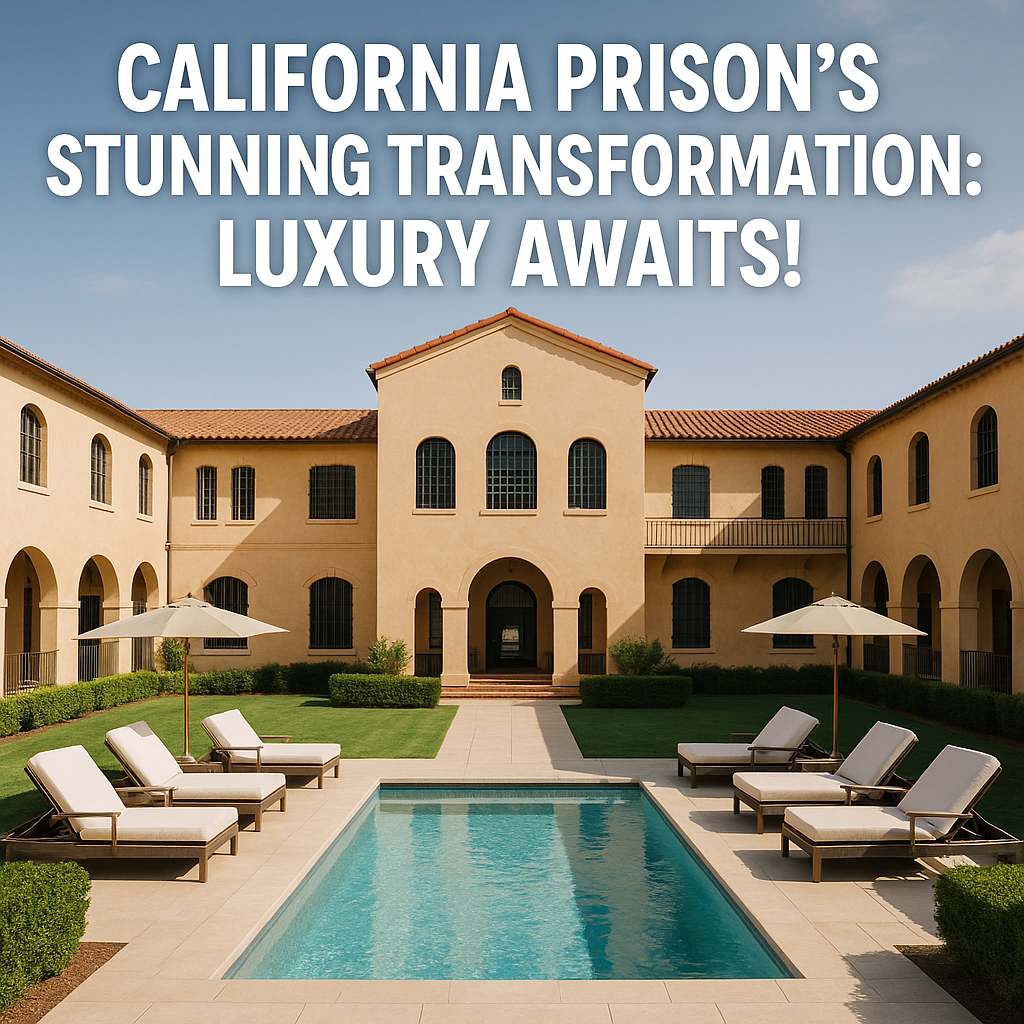California Prison’s Stunning Transformation: Luxury Awaits!
California Prison’s Stunning Transformation: Luxury Awaits!
California’s penal landscape is undergoing a remarkable transformation that blurs the lines between correctional facility and high-end resort—with the focus firmly placed on the Norco prison. Once a stark symbol of punishment, it is now being reimagined as a luxury hotel. This shift prompts several pressing questions: Can a prison truly become a place of comfort? What social implications does this transformation hold? Let’s delve into this intriguing narrative grounded in various perspectives and facts drawn from reputable news sources.
The Vision for Norco

The notion of transforming the Norco prison into a luxury accommodation has stirred a spectrum of opinions. On one hand, advocates tout this initiative as an innovative approach to repurpose underutilized facilities while aiming to stimulate local economies. According to a recent analysis from the Mercury News, there are plans to retain some historical prison elements, creating a unique blend of nostalgia and modernity. Features like prison cells may be creatively transformed into chic guest rooms, complete with luxurious amenities.
However, skepticism exists regarding whether this transformation will truly erase the oppressive legacy associated with prisons. Critics argue that turning a prison into a hotel trivializes the experiences of those who served time there. SFGate highlights concern among former inmates and advocates for criminal justice reform, who feel this effort commodifies a painful history, glossing over the systemic issues that lead to incarceration in the first place.
Economic and Social Implications
A Boost to Local Economy or a Misguided Initiative?
Supporters of the Norco prison’s transformation point to its potential to boost local tourism and create jobs. By attracting visitors, the initiative could substantially contribute to the economy of Norco and surrounding areas. Local businesses may thrive as new establishments arise to cater to the influx of tourists.
However, the economic benefits might come at a social cost. As highlighted by multiple sources, the hotel project raises questions about priorities. Are we investing in luxury experiences for tourists while neglecting the needs of marginalized communities? Will the profits generated here be funneled back into support services for former inmates or diverted solely into private hands?
Diverse Perspectives
The debate is far from one-sided. Some community members express optimism, viewing it as an innovative model that could redefine the concept of incarceration and rehabilitation. They argue that it presents an opportunity for dialogue about criminal justice reform within a fresh, engaging context.
On the contrary, activists voice their concerns that this initiative may pose an ethical dilemma. They fear it showcases a society more inclined to commercialize trauma rather than address systemic inequalities. Critics stress that transforming a prison into a luxury hotel may lead to the normalization of incarceration, diluting its real-world consequences.
Broader Implications Beyond the Hotel Walls
The refurbishment of Norco prison reflects larger trends in the criminal justice system. As noted in a variety of articles from the RSS feeds analyzed, prisons across the country face pressures to evolve in response to changing societal attitudes towards incarceration. The Norco initiative may serve as a microcosm of this broader transformation.
An Opportunity for Engagement
The proposal invites a necessary dialogue about rehabilitating not only buildings but also ideologies surrounding punishment and justice. Some experts suggest that engaging the community in this transformation could yield meaningful discussions about justice reform, historical legacies, and what we envision for future correctional spaces.
As this transformation unfolds, observers will likely keep a close eye on whether the project delivers on its promise of luxury while navigating the delicate balance between history and modernity. Will this initiative succeed in overcoming its controversial background? Only time will tell, but the discussions it sparks are undoubtedly essential to progress in our understanding of justice.
Conclusion: A Space for Reflection
The transformation of California’s Norco prison into a luxury hotel is nothing short of a stunning metamorphosis. It embodies a complex interplay of renewal, economic stimulation, and ethical reflection.
As this development progresses, it serves as a catalyst for ongoing conversations about our justice system, societal values, and the blurred lines that exist between rehabilitation and commodification. While some view this as an innovative solution to repurpose underutilized spaces, others caution against losing sight of the historical ramifications. The journey ahead promises to be as complex as the building itself, an architectural relic now poised at the crossroads of luxury and legacy.








